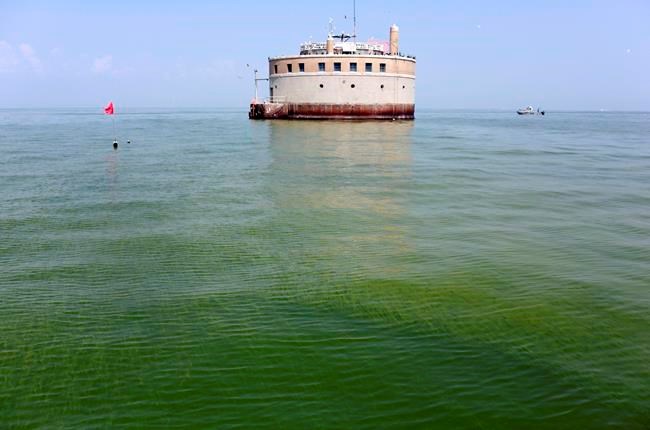TOLEDO, Ohio — Ohio's outline for sharply reducing what's making algae flourish in Lake Erie clearly shows that changes in farming methods are what's needed.
The blueprint also has a long list of ways to do that, but some environmental groups say the state's updated plan still lacks clear direction about what should come next.
The plan released Nov. 17 is designed to lay out how Ohio intends to reach its goal of making a 40
Michigan, Ontario and Ohio signed a deal two years ago agreeing to make steep cuts of phosphorus, which mainly comes from farm fertilizers and livestock manure that winds up in streams and rivers and then feeds algae in the lake.
Ohio's strategy calls for more than 50 steps to take or at least consider, including restoring wetlands along the lakeshore and looking at new limits on city wastewater plants.
But critics say it lacks specifics.
Gail Hesse, director of the National Wildlife Federation's Great Lakes water program, compared the plan's list of actions with a grocery list. "They added more ingredients, but there's still no recipe," she said.
The plan, for example, calls for continuing and expanding mostly voluntary farming practices — such as increasing soil testing and installing devices that control storm water — that are intended to slow fertilizer runoff. But what the plan doesn't get into is how much needs to be done or set goals to reach the 40
"Those are things we need to link together," she said. "Tell us what's going to prompt that change."
Karl Gebhardt, deputy director for water resources at the Ohio Environmental Protection Agency, has said the state's plan will be evolving and if what's being done now isn't working, changes will be made.
Agency spokeswoman Heidi Griesmer said the updated plan now has more priorities than earlier versions and that are benchmarks outlined for the state's major tributaries. "We're honing in on watersheds that will give us most impact," she said."
The state's strategy notes that recent research clearly points toward agriculture as the biggest source of phosphorus flowing into the lake's western end where algae blooms have taken hold in recent years.
It also says that waste water treatment plants and home septic tanks account for only a sliver of the phosphorus.
Environmental advocates have been complaining that the state has not done enough to reduce agriculture runoff.
Government agencies have spent billions of dollars on the growing algae problem nationwide, but an Associated Press investigation found little to show for their efforts.
Kristy Meyer, of the Ohio Environmental Council, said the state's plan to reach a 40
"We need to develop a roadmap back to a blue lake," she said. "What are the tactics, what are the costs? This is not a real plan for reduction."
John Seewer, The Associated Press


